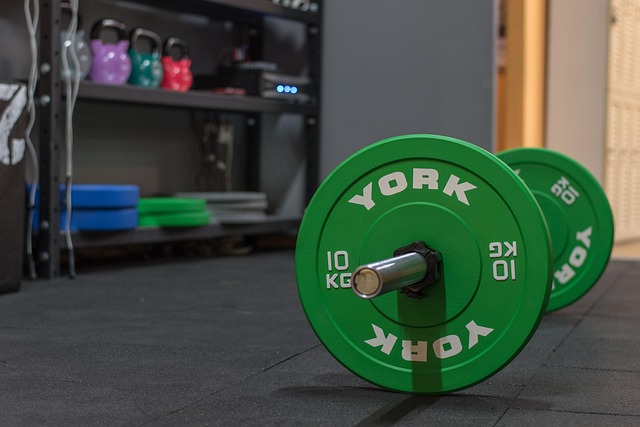Flexibility is often overlooked in the pursuit of fitness and overall health. While strength, endurance, and cardiovascular fitness dominate the conversation, flexibility plays a crucial role in enhancing physical performance, preventing injuries, and promoting long-term well-being. Stretching is the cornerstone of improving flexibility, but not all stretching techniques are created equal. In this article, we will explore the most effective stretching methods, their benefits, and how to incorporate them into your routine to unlock your body’s full potential.
Why Flexibility Matters
Before diving into the techniques, it’s important to understand why flexibility is so vital. Flexible muscles and joints allow for a greater range of motion, which can improve athletic performance, reduce muscle stiffness, and enhance posture. Additionally, maintaining flexibility as you age can help prevent common mobility issues and chronic pain. Whether you’re an athlete, a desk worker, or someone simply looking to feel better in your body, incorporating stretching into your daily routine can yield significant benefits.
Types of Stretching Techniques
There are several types of stretching techniques, each with its own purpose and best use case. Understanding these methods will help you tailor your stretching routine to your specific needs.
1. Static Stretching
Static stretching is perhaps the most well-known form of stretching. It involves slowly stretching a muscle to the point of mild discomfort and holding the position for 15-30 seconds. This technique is ideal for post-workout recovery or as part of a cool-down routine.
- Benefits : Reduces muscle tension, improves flexibility over time, and enhances relaxation.
- Examples : Hamstring stretch, quadriceps stretch, shoulder stretch.
- When to Use : Best performed after exercise when muscles are warm. Avoid static stretching before intense physical activity, as it may temporarily reduce muscle power.
2. Dynamic Stretching
Dynamic stretching involves controlled, repetitive movements that mimic the activity you’re about to perform. Unlike static stretching, dynamic stretching keeps your muscles active and engaged.
- Benefits : Increases blood flow, prepares the body for movement, and improves coordination.
- Examples : Leg swings, arm circles, walking lunges.
- When to Use : Ideal as part of a warm-up routine before workouts or sports activities.
3. Proprioceptive Neuromuscular Facilitation (PNF)
PNF is a more advanced stretching technique that combines passive stretching with isometric contractions. This method often requires a partner or resistance band to assist.
- How It Works : Stretch the muscle, contract it against resistance for 5-10 seconds, then relax and stretch further.
- Benefits : One of the fastest ways to improve flexibility and increase range of motion.
- Examples : PNF hamstring stretch, PNF shoulder stretch.
- When to Use : Great for targeted flexibility improvements, especially in rehabilitation settings.
4. Ballistic Stretching
Ballistic stretching uses rapid, bouncing movements to push muscles beyond their normal range of motion. While effective for certain athletes, this technique carries a higher risk of injury if not performed correctly.
- Benefits : Can improve explosive power and dynamic flexibility.
- Examples : Bouncing toe touches, rapid leg swings.
- When to Use : Best suited for highly trained individuals or athletes who require extreme flexibility. Avoid if you’re a beginner or recovering from injury.
5. Active Isolated Stretching (AIS)
AIS involves holding a stretch for just 1-2 seconds and repeating the movement 8-10 times. This technique focuses on isolating specific muscles and releasing tension gradually.
- Benefits : Reduces muscle tightness, improves circulation, and promotes healing.
- Examples : Calf stretch with a strap, hip flexor stretch.
- When to Use : Useful for pre-workout preparation or addressing tightness in specific areas.
Tips for Effective Stretching
To get the most out of your stretching routine, consider the following tips:
- Warm Up First : Stretching cold muscles can lead to strains or tears. Perform light cardio (e.g., jogging in place or jumping jacks) for 5-10 minutes before stretching.
- Focus on Form : Proper alignment is key to avoiding injury and maximizing effectiveness. Pay attention to your posture and breathing during each stretch.
- Be Consistent : Flexibility doesn’t improve overnight. Aim to stretch at least 3-4 times per week to see noticeable progress.
- Listen to Your Body : Stretching should feel challenging but not painful. If you experience sharp pain, stop immediately and reassess your technique.
- Breathe Deeply : Controlled breathing helps relax the muscles and deepen the stretch. Inhale deeply, and exhale as you ease into the stretch.
- Target Major Muscle Groups : Focus on areas prone to tightness, such as the hamstrings, hip flexors, shoulders, and lower back.
Incorporating Stretching into Your Routine
The key to success is consistency. Here’s how you can seamlessly integrate stretching into your daily life:
- Morning Routine : Start your day with gentle dynamic stretches to wake up your muscles and prepare for the day ahead.
- Post-Workout Recovery : Dedicate 10-15 minutes after exercise to static stretching to aid recovery and reduce soreness.
- Desk Breaks : If you work at a desk, take short breaks every hour to stretch your neck, shoulders, and legs.
- Evening Wind-Down : Use static or PNF stretching in the evening to release tension and promote relaxation before bed.
Common Mistakes to Avoid
Even the best intentions can lead to setbacks if certain mistakes are made. Be mindful of the following pitfalls:
- Overstretching : Pushing too hard too soon can lead to strains or tears. Progress gradually.
- Skipping Warm-Ups : Always prepare your muscles before intense stretching.
- Neglecting Balance : Stretch both sides of your body equally to maintain symmetry and prevent imbalances.
- Rushing Through Stretches : Take your time and focus on the quality of each stretch rather than quantity.

Leave a Reply